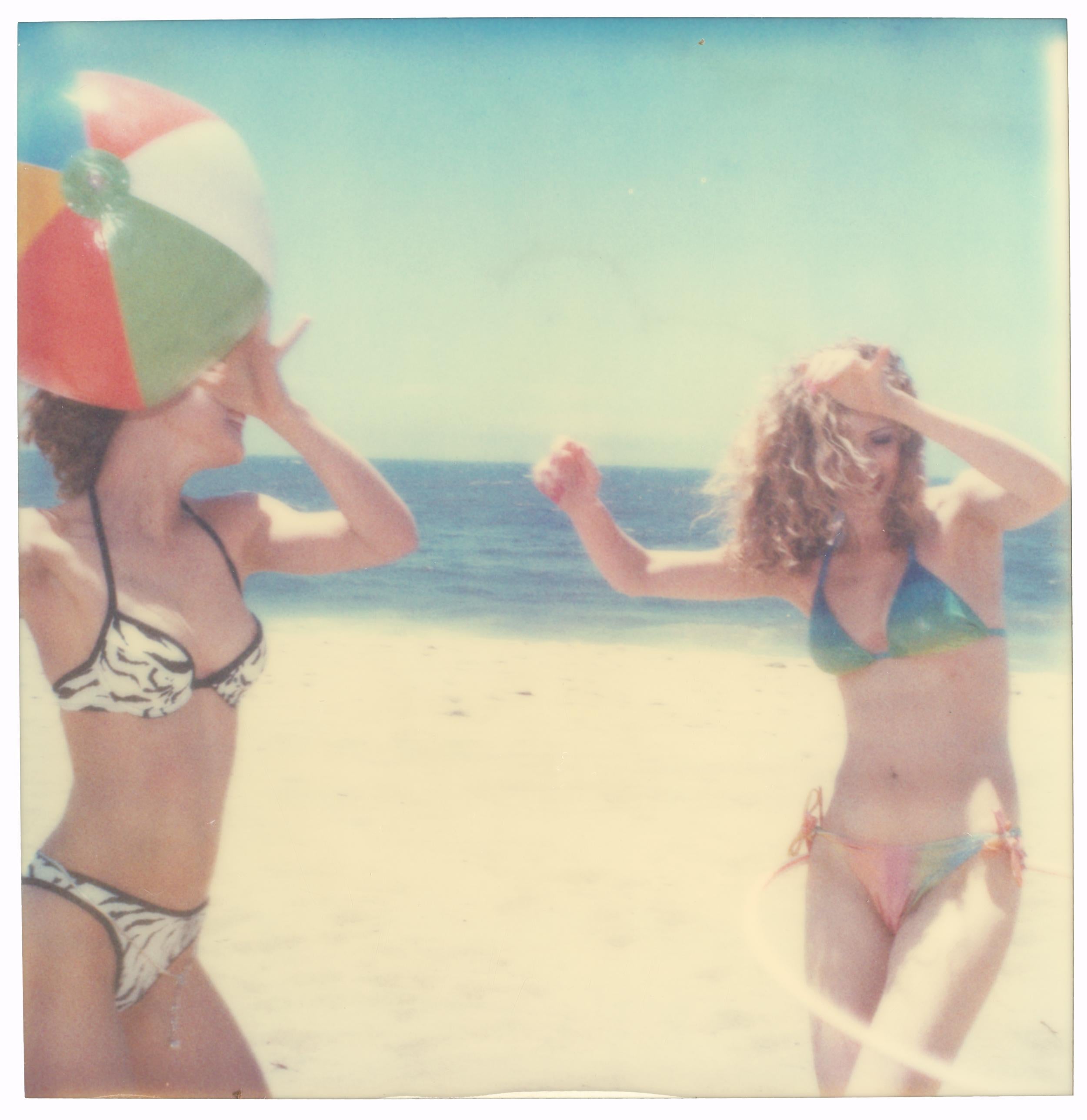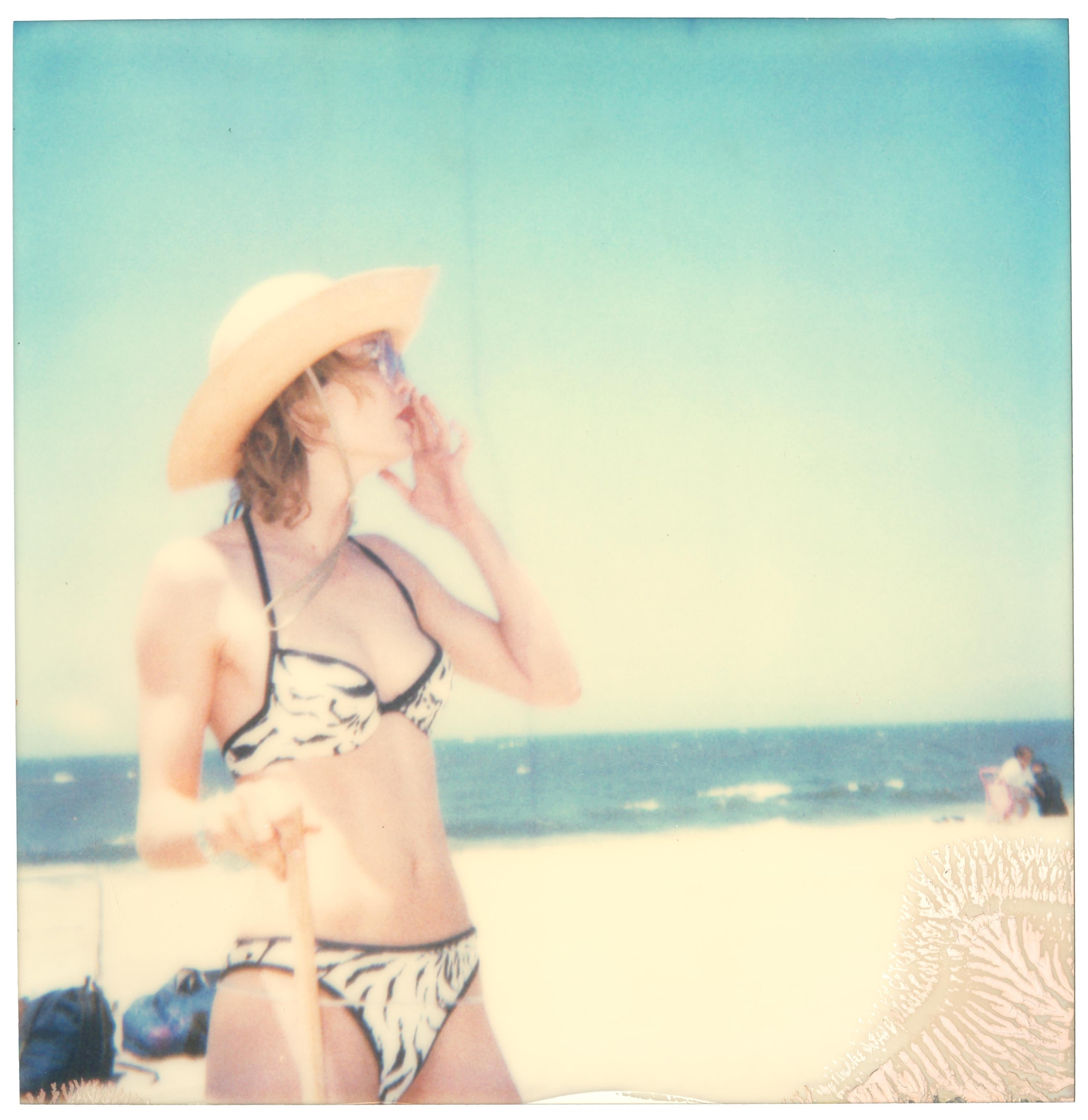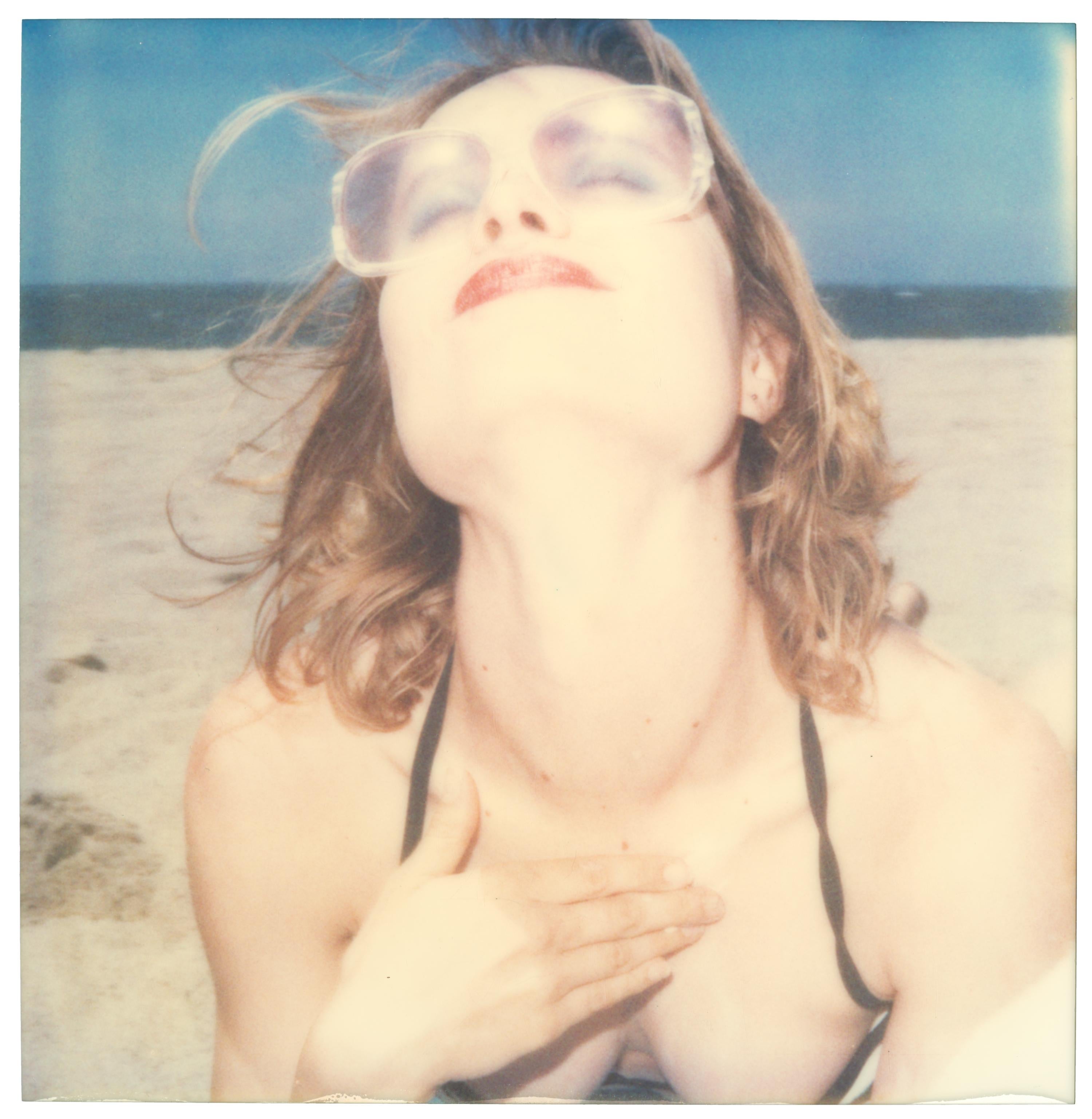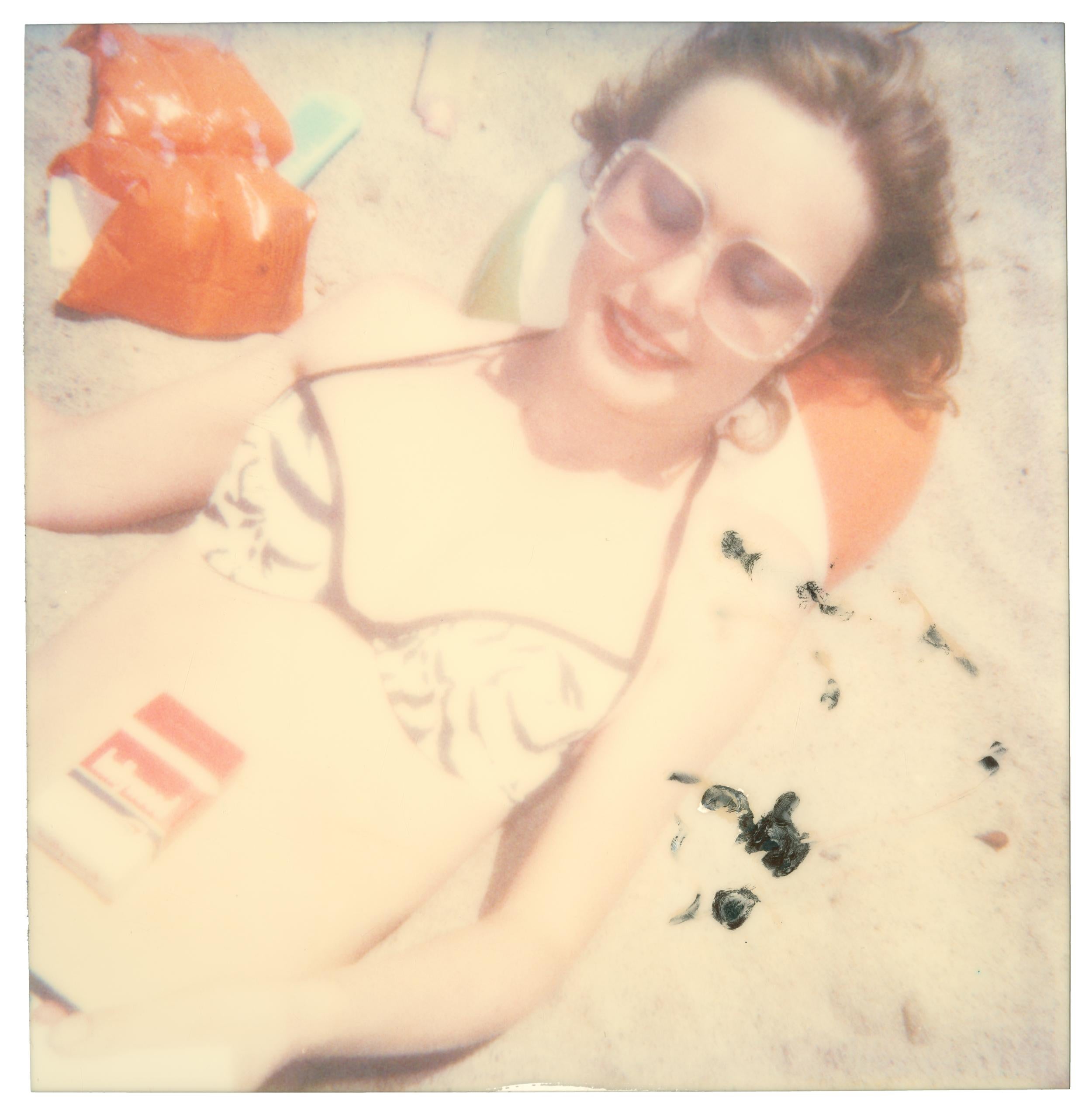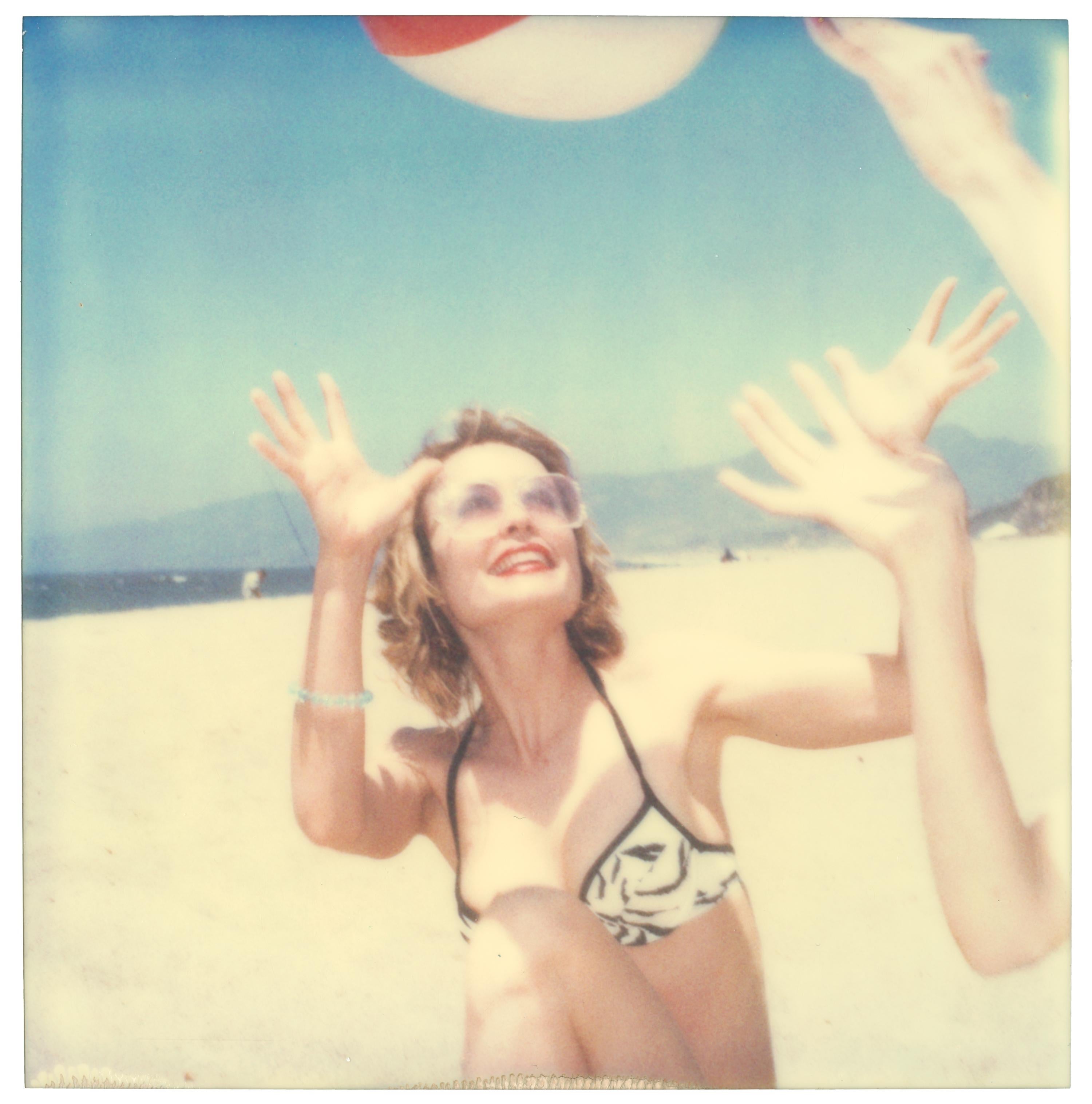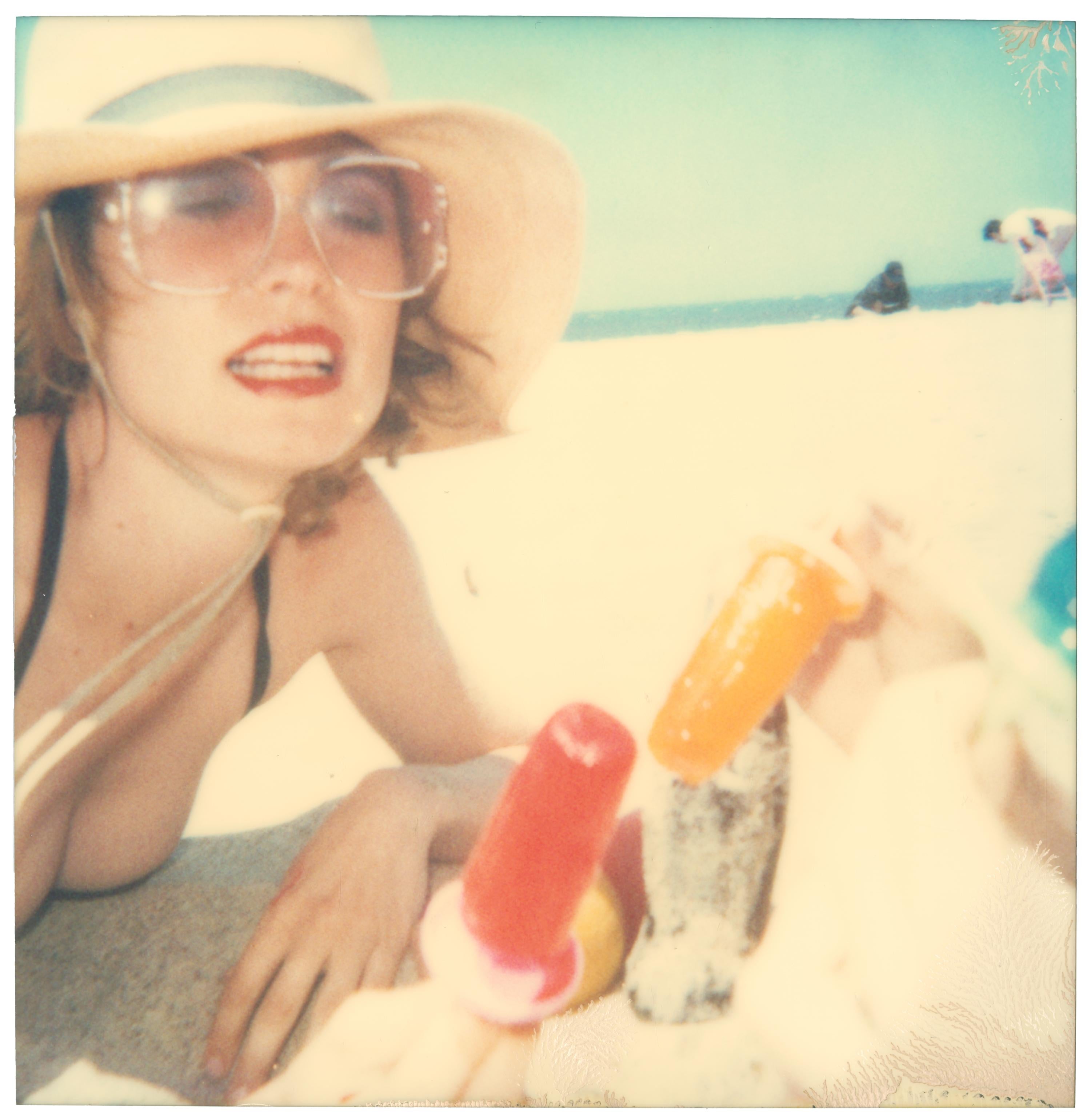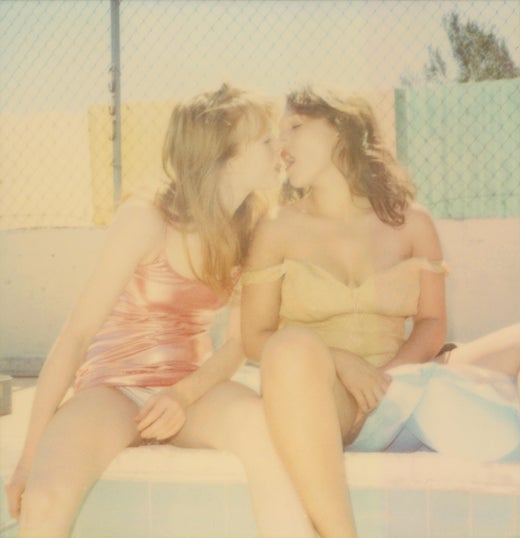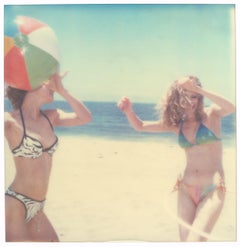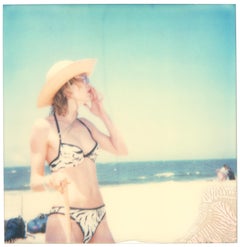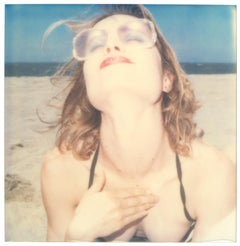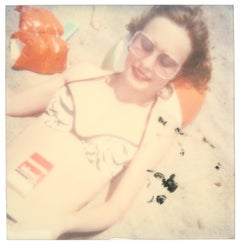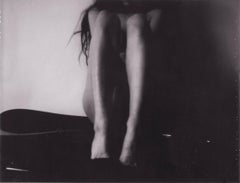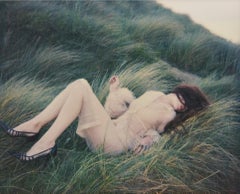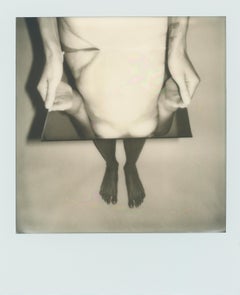Items Similar to Untitled (Beachshoot) with Radha Mitchell - Polaroid, Contemporary, Women
Want more images or videos?
Request additional images or videos from the seller
1 of 5
Stefanie SchneiderUntitled (Beachshoot) with Radha Mitchell - Polaroid, Contemporary, Women2005
2005
$833.34
£619.40
€700
CA$1,150.61
A$1,275.94
CHF 670.41
MX$15,589.83
NOK 8,387.77
SEK 7,873.36
DKK 5,330.15
About the Item
Untitled (Beachshoot) - 2005
50x50cm, Edition of 10,
digital C-Print, based on a Polaroid
Certificate and Signature label,
artist Inventory # 898,
not mounted
“I never remember the details of a Stefanie Schneider image, just the whole. She treads a third path between reality and dream that connects the two and truly sparks my artistic, visual freedom.” Marc Forster
Stefanie Schneider interviewed by Dutch Filmmaker Willem Baptist
When did you first decide to work with Polaroids? Why do Polaroids seem to be so well tuned to our (artistic) senses, perception and minds?
I started using expired Polaroid film in 1996. It has the most beautiful quality and perfectly encapsulates my vision. The colors on one hand, but then the magic moment of witnessing the image appear. Time seems to stand still, and the act of watching the image develop can be shared with the people around you. It captures a moment, which becomes the past so instantly that the decay of time is even more apparent; – it gives the image a certain sentimentality. The Polaroid moment is an original every time. An artifact.
Why use a medium from the past?
For me, analog has always been there in the present. For the new generation, analog is interesting because it's new to them. I understand that people growing up in a digital age will wonder about its usefulness, but it's theirs to recover if they want to. When I first started working with Polaroid, it wasn't the past. It was a partially forgotten medium, but it existed nonetheless. It is mine by choice as there is no substitute for tangible beauty.
Is it imperfect?
The imperfect perfection in a “wabi-sabi” kind of way.
Wabi-sabi (侘寂) represents a comprehensive Japanese world view or aesthetic centered on the acceptance of transience and imperfection. The aesthetic is sometimes described as one of beauty that is imperfect, impermanent, and incomplete.
'If an object or expression can bring about, within us, a sense of serene melancholy and a spiritual longing, then that object could be said to be wabi-sabi'. 'Wabi-sabi nurtures all that is authentic by acknowledging three simple realities: nothing lasts, nothing is finished, and nothing is perfect.'
Is the Polaroid photograph recognizable or even sometimes cliché?
Absolutely! There's something cliché about the way I'm showing the American Dream. I live it myself, trying to find perfection in an imperfect world. Reaching for the horizon. The dream is broken; the cliché tumbles. There are different ways to involve an audience. You could make movies like Harmony Korine's 'Gummo' a masterpiece in my view but which would probably estrange a large part of an audience. A certain film education is a prerequisite. Or you can start with clichés, the audience then feels safe, which lures them into the depth of your world without them even knowing it or understanding where exactly they are being led to. Appealing to emotions and the sub-conscious. Normal, Change, New Normal.
You continually revisit the landscape of the American West in your work. What draws you back to this scene?
Southern California represents a dream to me. The contrast of Northern Germany, where I grew up, to the endless sunshine of Los Angeles was what first attracted me. The American West is my dream of choice. Wide, open spaces give perspectives that articulate emotions and desires. Isolation feeds feelings of freedom or sometimes the pondering of your past. The High Desert of 29 Palms has very clear and vivid light, which is vital. Expired Polaroid film produces 'imperfections' that I would argue mirrors the decline of the American dream. These so called 'imperfections' illustrate the reality of that dream turning into a nightmare. The disintegration of Western society.
Are you playing with the temporality of the material and the value of the moment itself?
The value of the moment is paramount, for it is that moment that you're trying to transform. All material is temporary, it's relative, and time is forever.
Why does analog film feel more pure and intuitive?
It's tangible and bright and represents a single moment.
The digital moment may stay in the box (the hard drive / camera / computer etc.)
forever, never to be touched, or put into a photo album, sent in a letter, or hung on a wall.
Printing makes it an accomplishment.
The analog world is more selective because it's real. Film is a choice.
The digital worldwide clicking destroys this moment. The generation without memories due to information overload and hard drive failures. Photo albums are a thing of the past.
Why does it feel this way?
That's how the human instinct works.
When I was a child, every picture been taken was a special moment. Analog photographic film as well as Super-8 material were expensive treasures. My family's memories were created by choosing certain moments in time. There was an effort behind the picture. The roll of film might wait months inside the camera before it was all used. From there, the film required developing, which took more time, and finally, when the photos were picked up from the shop, the memories were visited again together as a family. Who knew then, how fleeting these times were. Shared memories was a ritual.
What's your philosophy behind the art of Polaroid pictures?
The 'obsolete' is anything but obsolete. Things are not always as they appear, and there are hidden messages. Our memories and our dreams are under-valued. It is there that real learning and understanding begins by opening yourself to different perspectives. Who we are and where we come from is important. A Polaroid is a testimony to our existence. But our time is fading fast.
What inspired you to use stop motion cinematography?
My work has always resembled movie stills. I remember the first time I brought a box of Polaroids and slid them onto Susanne Vielmetter's desk (my first gallery). Instantly, it became apparent that there was a story to tell. The stories grew. It was undeniable to me, that the emerging story was where I was destined to go. I've made four short films before my latest feature film, The Girl behind the White Picket Fence. This film is 60 minutes long with over 4000 edited Polaroids. Remember that our sub-conscious fills in blanks, the parts missing from the story between photograph stills allow a deeper and more personal experience for the viewer. That is, if you surrender yourself and trust me as the director to lead you somewhere you might not have ever been before.
Why do you think it is important to own art?
'We have art in order not to die of the truth'
Nietzsche
- Creator:Stefanie Schneider (1968, German)
- Creation Year:2005
- Dimensions:Height: 19.69 in (50 cm)Width: 19.69 in (50 cm)Depth: 0.04 in (1 mm)
- Medium:
- Movement & Style:
- Period:
- Condition:
- Gallery Location:Morongo Valley, CA
- Reference Number:Seller: STSCH #0801stDibs: LU65236933732
Stefanie Schneider
Stefanie Schneider received her MFA in Communication Design at the Folkwang Schule Essen, Germany. Her work has been shown at the Museum for Photography, Braunschweig, Museum für Kommunikation, Berlin, the Institut für Neue Medien, Frankfurt, the Nassauischer Kunstverein, Wiesbaden, Kunstverein Bielefeld, Museum für Moderne Kunst Passau, Les Rencontres d'Arles, Foto -Triennale Esslingen., Bombay Beach Biennale 2018, 2019.
About the Seller
4.9
Platinum Seller
Premium sellers with a 4.7+ rating and 24-hour response times
Established in 1996
1stDibs seller since 2017
1,037 sales on 1stDibs
Typical response time: 2 hours
- ShippingRetrieving quote...Shipping from: Morongo Valley, CA
- Return Policy
Authenticity Guarantee
In the unlikely event there’s an issue with an item’s authenticity, contact us within 1 year for a full refund. DetailsMoney-Back Guarantee
If your item is not as described, is damaged in transit, or does not arrive, contact us within 7 days for a full refund. Details24-Hour Cancellation
You have a 24-hour grace period in which to reconsider your purchase, with no questions asked.Vetted Professional Sellers
Our world-class sellers must adhere to strict standards for service and quality, maintaining the integrity of our listings.Price-Match Guarantee
If you find that a seller listed the same item for a lower price elsewhere, we’ll match it.Trusted Global Delivery
Our best-in-class carrier network provides specialized shipping options worldwide, including custom delivery.More From This Seller
View AllUntitled (Beachshoot) - based on a Polaroid - featuring Radha Mitchell
By Stefanie Schneider
Located in Morongo Valley, CA
Untitled (Beachshoot) - 2005
20x20cm, Edition of 10, plus 2 Artist Proofs.
Archival C-Print, based on a Polaroid.
Certificate and Signature label.
Artist Inventory # 21398.
Not...
Category
Early 2000s Contemporary Color Photography
Materials
Archival Paper, Photographic Paper, C Print, Color, Polaroid
Untitled (Beachshoot) - Polaroid - featuring Radha Mitchell
By Stefanie Schneider
Located in Morongo Valley, CA
Untitled (Beachshoot) - 2005
20x20cm,
Edition of 10, plus 2 Artist Proofs.
Archival C-Print, based on the Polaroid.
Certificate and Signature label.
Artist Inventory # 21396.
...
Category
Early 2000s Contemporary Color Photography
Materials
Photographic Paper, Polaroid, Color, C Print, Archival Paper
Untitled (Beachshoot) - Polaroid - featuring Radha Mitchell
By Stefanie Schneider
Located in Morongo Valley, CA
Untitled (Beachshoot) - 2005
48x46cm, Edition of 10, plus 2 Artist Proofs.
Archival C-Print, based on a Polaroid.
Certificate and Signature label.
Artist Inventory # 21337.
Not ...
Category
Early 2000s Contemporary Color Photography
Materials
Archival Paper, Photographic Paper, C Print, Color, Polaroid
Untitled (Beachshoot) - based on a Polaroid - featuring Radha Mitchell
By Stefanie Schneider
Located in Morongo Valley, CA
Untitled (Beachshoot) - 2005
48x46cm, Edition of 10, plus 2 Artist Proofs.
Archival C-Print, based on a Polaroid.
Certificate and Signature label.
Artist Inventory # 21400.
Not...
Category
Early 2000s Contemporary Color Photography
Materials
Archival Paper, Photographic Paper, C Print, Color, Polaroid
Untitled (Beachshoot) - Polaroid - featuring Radha Mitchell
By Stefanie Schneider
Located in Morongo Valley, CA
Untitled (Beachshoot) - 2005
20x20cm,
Edition of 10, plus 2 Artist Proofs.
Archival C-Print, based on the Polaroid.
Certificate and Signature label.
Artist Inventory # 1404.
N...
Category
Early 2000s Contemporary Color Photography
Materials
Archival Paper, Photographic Paper, C Print, Color, Polaroid
Untitled (Beachshoot) - Polaroid - featuring Radha Mitchell
By Stefanie Schneider
Located in Morongo Valley, CA
Untitled (Beachshoot) - 2005
20x20cm,
Edition of 10, plus 2 Artist Proofs.
Archival C-Print, based on the Polaroid.
Certificate and Signature label.
Artist Inventory # 21395.
...
Category
Early 2000s Contemporary Color Photography
Materials
Archival Paper, Photographic Paper, C Print, Color, Polaroid
You May Also Like
Landed – Emma Summerton, Polaroid, Colour, High Heels, Seascape, Beach, Sky, Hut
By Emma Summerton
Located in Zurich, CH
Emma SUMMERTON (*1970, Australia)
Landed, 2005
Archival pigment print on Hahnemühle Paper
100 x 120 cm (39 3/8 x 47 1/4 in.)
Edition of 5, plus 2 AP; Ed. no. 2/5
Print only
Australian born Emma Summerton (*1970) graduated from the National Art School in Sydney, where she studied fine arts majoring in Photography. Summerton moved to London in 1998, where she worked as an assistant to artist Fiona Banner while starting her career as a photographer.
Emma Summerton’s first published fashion editorial was a Self Portrait Polaroid story shot for Dazed & Confused in 2005. Since then Summerton has established herself as one of the most talented photographers to emerge in the mid 2000's. Her in-depth technical knowledge coupled with her eye for detail and love for fashion have made her images not only unique but very distinctive, setting her apart from other photographers working in the industry today.
Summerton’s Editorial Clients include: Italian, British, American, German, Australian, Spanish, Japanese and Chinese Vogue’s, i-D, Self Service, Dazed & Confused, The Last magazine,10 and Big Magazine.
– Art, Contemporary, Colour, Photography, Fine Art, Fashion, Polaroid, Architecture, House, Beach, Seascape, Blue, Sky, Shoes...
Category
Early 2000s Contemporary Color Photography
Materials
Archival Pigment
Emma SummertonLanded – Emma Summerton, Polaroid, Colour, High Heels, Seascape, Beach, Sky, Hut, 2005
Price Upon Request
Free Shipping
Chelsea Hotel #3 – Emma Summerton, Polaroid, Interior, Woman, Nude, Polaroid
By Emma Summerton
Located in Zurich, CH
Emma SUMMERTON (*1970, Australia)
Chelsea Hotel #3, 2003
Archival pigment print on Hahnemühle Paper
100 x 120 cm (39 3/8 x 47 1/4 in.)
Edition of 5, plus 2 AP; Ed. no. 1/5
Print only...
Category
Early 2000s Contemporary Color Photography
Materials
Archival Pigment
Price Upon Request
Free Shipping
Nude Dress #1 – Emma Summerton, Polaroid, Grass, Woman, Nude, Polaroid
By Emma Summerton
Located in Zurich, CH
Emma SUMMERTON (*1970, Australia)
Nude Dress #1, 2005
Archival pigment print on Hahnemühle Paper
100 x 120 cm (39 3/8 x 47 1/4 in.)
Edition of 5, plus 2 AP; Ed. no. 3/5
Print only
Australian born Emma Summerton (*1970) graduated from the National Art School in Sydney, where she studied fine arts majoring in Photography. Summerton moved to London in 1998, where she worked as an assistant to artist Fiona Banner...
Category
Early 2000s Contemporary Color Photography
Materials
Archival Pigment
Price Upon Request
Free Shipping
"Pola Girls 11" Unique Polaroid Photography by Larsen Sotelo
By Larsen Sotelo
Located in Culver City, CA
"Pola Girls 11" Unique Polaroid Photography by Larsen Sotelo
4.2" x 3.5" inch - including white Polaroid frame
3.1" x 3,1" inch - image area
Comes with A...
Category
21st Century and Contemporary Contemporary Nude Photography
Materials
Polaroid
"Pola Girls 15" Nude Polaroid Photography - Unique piece by Larsen Sotelo
By Larsen Sotelo
Located in Culver City, CA
"Pola Girls 15" Nude Polaroid Photography - Unique piece by Larsen Sotelo
4.2" x 3.5" inch - including white Polaroid frame
3.1" x 3,1" inch - image area
...
Category
21st Century and Contemporary Contemporary Nude Photography
Materials
Polaroid
"Pola Girls 10" Unique Polaroid Photography by Larsen Sotelo
By Larsen Sotelo
Located in Culver City, CA
"Pola Girls 10" Unique Polaroid Photography by Larsen Sotelo
4.2" x 3.5" inch - including white Polaroid frame
3.1" x 3,1" inch - image area
Comes with A...
Category
21st Century and Contemporary Contemporary Nude Photography
Materials
Polaroid
More Ways To Browse
Rauschenberg Print
Slater Abstract Art
The Fool
Bird Prints Hand Colored
Galerie Louise Leiris
George Washington Plate
Leon Israel
Lyons Antique Prints
Marine Posters
Miro Mallorca
Norman Rockwell Signed Prints
Notre Dame Lithograph
Stage Theater
Turkey Painting
Vienna Collection
Vintage Screen Print
Black Granite Sculpture
Glasgow Girls
